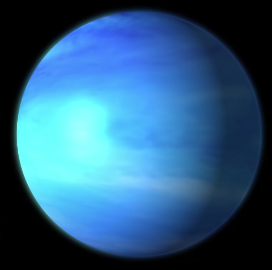TESS Discovers Planets; Starhopper Begins
January 25, 2019
As 2019 begins, the year brings with it news of distant discoveries and the development of super heavy-lift starships. NASA and SpaceX each plan to make this year an important one for great beginnings.
NASA’s TESS (Transitioning Exoplanet Survey Satellite) was launched in April of 2018 and began its observations in October. It has already confirmed the discovery of three exoplanets.
For those who don’t know, an exoplanet is a planet not within our solar system; it orbits another starp. As of December 13, according to the NASA Exoplanet Archive, 3,869 exoplanets have been discovered.

Of the three exoplanets discovered, one of them is likely to be a terrestrial planet, and a hot one at that. LHS 3844b, 1.3 times the size of Earth, orbits its star every 11 hours, resulting in the planet’s having an estimated surface temperature of approximately 989.33°F. It is likely that is hot enough for lava pools to form on the surface. Its star, LHS 3844 (most exoplanets have names similar to their stars), an M-Type star one-fifth the size of our sun, is approximately 49 light years from our sun.

The first gas giant discovered, also TESS’ first planetary discovery, is Pi Mensae C. This gas giant, which is twice the size of Earth, was the second planet to be discovered in the Pi Mensae system, its older sibling planet being a superjovian gas giant near 40 times the size of Jupiter. “C” is likely to be made of water, due to its density, according to Chelsea Huang of Massachusetts Institute of Technology. It’s star, Pi Mensae, is 1.2 times the size of ours and nearly 60 light years away.

This third planet, also a gas giant, is similar to Pi Mansae C in certain ways. The planet is approximately three times the size of Earth, and it is also believed to be composed of water, due to its density being greater than Neptune’s. The planet is also the coolest exoplanet found for a star as bright as the one its orbiting, with a surface temperature of around 300°F. The other thing that makes this solar system interesting is that there may be another planet within the system. If that’s so, it could be the smallest exoplanet discovered, just around the size of Earth.
The future is looking bright for TESS. Who knows how many more discoveries it will make?
Ready to Glide
SpaceX is ready to start the year with a late Christmas gift: the Starhopper.
Many people probably already know of Elon Musk’s goal to settle the first human colony on our neighbor Mars, but few people who don’t extensively follow the company know what rocket will be the transport from here to the red planet. That’s because it is not made yet.
The ship that is confirmed to be made is the BFR, Big Falcon Rocket, which will be the world’s largest and most powerful rocket ship ever. SpaceX already took to the title for the world’s current most powerful rocket, the Falcon Heavy, back in February of 2018. As of now, the Saturn V still holds the No. 1 spot, 52 years after its creation.
The 118-meter powerhouse will stand eight meters taller than the Saturn V and will have a payload lift capability of 220,000 lbs. The BFR could launch as soon as 2020, but before it can do that, a more simplified version will need to fly first.

Opinions on the design of this ship vary from person to person. Some people think it looks like a scraped together tin can while others adore the simplistic ’50s spaceship design. And some, like this reporter, think the ship’s design fits in just right as looks aren’t a priority for a hopper ship.
The purpose of the Starhopper is to test lifting and landing capabilities. Supposedly, with the maximum height, it will reach around 500 meters.
This is very similar to what SpaceX did with its current ship, the Falcon 9. The “Grasshopper” version was tested back in 2012 before the current version of the Falcon 9 was put to work, testing its hover and landing capabilities.
According to Musk’s Twitter, the tests could begin as soon as February.


